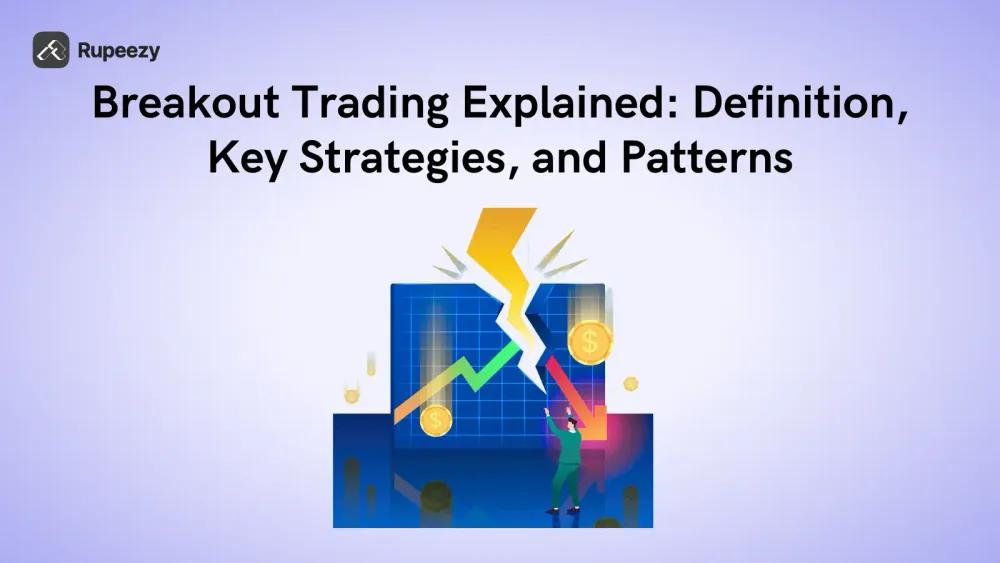Breakout Trading Explained: Definition, Key Strategies, and Patterns


00:00 / 00:00
Breakout trading focuses on moments when the price escapes a well?defined range. That move often marks a shift in supply and demand, brings in fresh participation, and can start a strong trend. The edge comes from planning around those inflection points with objective levels, clear confirmation, and disciplined risk control. This guide defines breakouts, shows how to filter strong signals from noise, lays out step?by?step strategies with entries and exits, and maps the patterns most likely to deliver follow-through.
Breakout Trading Strategies, Confirmation, and Patterns
What is Breakout trading?
A breakout is a decisive move above resistance or below support that closes outside the prior range. Quality breaks typically occur after multiple tests of a level, attract rising volume, and hold outside the broken boundary without slipping back into the range. The goal is to participate as the new trend leg begins, while capping risk if the move fails.
How to identify valid breakouts
Define clean levels: Favor horizontal levels touched at least two or three times. The more obvious the level, the more traders anchor to it.
Watch participation: Breaks that coincide with rising volume and wide real?body candles show conviction.
Require structure: Look for compression before the move, for example, tight ranges or contracting highs and lows.
Prefer closes, not wicks: A close outside the level filters many intrabar feints.
Use retests. After the initial push, the price often returns to the level. A successful hold turns old resistance into new support, and vice versa.
Entry rules that improve follow-through
Break?close entry: Enter on the candle close beyond the level, or place a stop order a small buffer beyond it to avoid partial breaches.
Retest entry: If price pulls back to the breakout line and holds, enter on a reversal candle or a regain of the level. This can improve reward to risk.
Time?of?day context for equities: Liquidity clusters at the open and into the close. Opening range breaks can be powerful but volatile, so use a smaller size or tighter invalidation.
Volatility filters: Avoid entering when the bar that triggers the break is unusually extended relative to recent candles. Chasing extreme bars often leads to whipsaws.
Effective Breakout Trading Strategies
1) Horizontal level break strategy
Set up: Range with clear support and resistance on your chosen timeframe.
Trigger: Price closes above resistance for longs or below support for shorts.
Stop: Just inside the prior range, for example, below the broken resistance for longs.
Targets: Measured move from the height of the range, or a trailing stop.
Tip: Align with the higher timeframe trend to boost odds.
2) Opening Range Breakout (ORB)
Set up: Define the first 5, 15, or 30 minutes as the opening range.
Trigger: Buy a break of the high for longs or sell a break of the low for shorts.
Stop: Inside the range.
Targets: Range height projected from the break, or trail by a volatility method.
Tip: Consider skipping trades when the opening range is unusually wide relative to recent days.
3) Volatility breakout with ATR
Set up: Identify a consolidation, then use Average True Range to normalize stops.
Trigger: Break and close beyond the boundary.
Stop: A multiple of ATR away from the highest high or lowest low since entry, often 2 to 3 times ATR.
Trail: Lift the stop as the trade advances using a chandelier?style rule.
Example: Daily ATR is 1.8, long triggers at 50.20, trail at the highest close minus 3 × ATR. If the price reaches 54.00 and the highest close is 53.80, stop trails to 48.40.
4) Pullback or retest entry
Set up: Level breaks, then price returns to test it.
Trigger: A higher low forms above new support for longs, or a lower high below new resistance for shorts.
Stop: Just beyond the level that failed to hold.
Targets: Prior swing highs or measured moves from the pattern that preceded the break.
High probability breakout patterns
Triangles
Ascending triangles feature rising swing lows against flat resistance, often signaling upward pressure. Descending triangles mirror the idea of downside breaks. Symmetrical triangles show converging trendlines and a coiled market. Typical targets use the widest part of the triangle projected from the breakout.Flags and pennants
After a sharp impulse, flags drift counter to the trend in a channel, while pennants contract into a small triangle. The break in the direction of the prior impulse often continues the move. A common target equals the length of the prior impulse projected from the break.Rectangles and ranges
Price oscillates between parallel support and resistance. The measured move equals the range height added to an upside break or subtracted from a downside break. Expect head? fakes near the boundaries, so confirmation and careful stops matter.Cup and handle
A rounded base forms the cup, followed by a shallow pullback that creates the handle. Completion occurs on a break above the cup lip. Stops often sit below the handle low, and conservative targets use the cup depth.
Risk management and trade management for breakouts
Position sizing with R. Decide how much you are willing to risk per trade, for example, 1 R equals 1 percent of the account. If your stop is 1.50 per share, size the position so a full stop equals 1 R. Traders who prefer to optimize capital while maintaining controlled risk can use a Margin Trading Facility (MTF) to fund larger positions efficiently
Stop placement options. Options include just inside the broken level, below the last swing for longs, or a volatility approach like 2 to 3 times ATR.
Profit taking and trailing. Combine partial targets with a trail. For instance, take one third at a 1.5 R target, another third at a measured move, then let the final third ride under a trailing stop.
Time stops. If a breakout goes nowhere after a set number of bars and volume fades, consider exiting to free up capital.
Avoiding false breakouts
Throwback versus failure. A throwback is a normal retest that holds and resumes. A failure pushes back into the range and closes there, often with rising volume in the opposite direction.
Align timeframes. Favor breakouts that agree with the higher timeframe trend. A 15?minute breakout that aligns with a daily uptrend has cleaner follow-through than one fighting it.
Market and instrument selection. Prioritize symbols with consistent liquidity, tighter spreads, and catalysts that drive participation.
Common mistakes to skip. Chasing extended bars, trading every minor level, ignoring the broader trend, over?sizing, and moving stops farther away after entry.
A simple breakout checklist
Level tested at least twice and clearly visible.
Pre?break compression or tight range.
Catalyst or session with strong participation.
Close outside the level, not just a wick.
Defined stop and position size before entry.
Target plan and trailing method are ready.
Be willing to cut quickly if price reenters the range.
Conclusion
Breakout trading rewards preparation and consistency. Work with clean levels, wait for confirmation, and size positions around a predefined stop. Use patterns like triangles, flags, rectangles, and cup and handle to frame targets and risks. Combine partial profit taking with a rational trailing method, and treat failed breaks as routine costs of doing business. With a rules?based approach, breakouts can add a reliable, repeatable edge across markets and timeframes.
FAQs:
What is a breakout in trading?
A breakout occurs when a stock or asset price moves beyond a key support or resistance level, signaling a potential start of a new trend.Is breakout trading profitable?
Yes, breakout trading can be profitable by capturing strong price moves early, but it requires careful risk management to avoid false breakouts.What does breakout mean when trading?
In trading, a breakout means the price has surpassed a defined barrier like support or resistance, indicating increased momentum in that direction.Which breakout strategy is best?
The best breakout strategy combines volume confirmation, proper stop-loss placement, and uses reliable technical patterns like flags, triangles, or moving averages.How to confirm breakout trading?
Confirmation comes from increased volume, retests of the breakout level, and using technical indicators like RSI or MACD to validate strength.Which timeframe is best for breakout?
The ideal timeframe varies, but daily or 4-hour charts often provide a balance of reliable signals and trading opportunities for breakout strategies.
The content on this blog is for educational purposes only and should not be considered investment advice. While we strive for accuracy, some information may contain errors or delays in updates.
Mentions of stocks or investment products are solely for informational purposes and do not constitute recommendations. Investors should conduct their own research before making any decisions.
Investing in financial markets are subject to market risks, and past performance does not guarantee future results. It is advisable to consult a qualified financial professional, review official documents, and verify information independently before making investment decisions.

All Category










